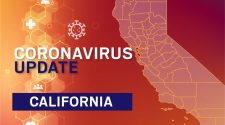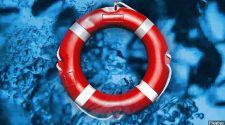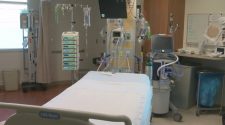U.S. surpasses Italy in the total number of confirmed deaths.
The United States on Saturday surpassed Italy in the total number of confirmed deaths from the coronavirus, reaching its deadliest day on Friday with 2,057 deaths. As of Saturday afternoon, the total stood at 20,229.
Already the pandemic has put more than 16 million out of work, forcing President Trump into the difficult choice of reopening the country as the country reels economically from the pandemic.
Deaths in the United States per capita remained lower than in Italy, though some experts have warned that geography and population density have helped cushion the United States so far. To date, the virus has killed 19,468 in Italy, or 32 individuals per 100,000 people. In the United States, the number of deaths per 100,000 people was six.
As Mr. Trump grapples simultaneously with the most devastating public health and economic crises of a lifetime, he finds himself pulled in opposite directions. Bankers, corporate executives and industrialists are pleading with him to reopen the country as soon as possible, while medical experts beg for more time to curb the coronavirus.
Tens of thousands more people could die. Millions more could lose their jobs. And his handling of the crisis appears to be hurting his political support in the run-up to November’s election. Yet the decision on when and how to reopen is not entirely his. The stay-at-home edicts keeping most Americans indoors were issued by governors state by state.
The president did issue nonbinding guidelines urging a pause in daily life through the end of the month. And if he were to issue new guidance outlining a path toward reopening, many states would probably follow or feel pressure from businesses and constituents to ease restrictions.
But the central question is how long it will be until the country is fully back up and running.
The governors of Texas and Florida, both Republicans, have started talking about reopening businesses and schools in their states, echoing signals from Mr. Trump.
But the leaders of California and New York, both Democrats, are sounding more cautious notes about how quickly things can get back to normal.
“California’s curve is flattening,” Gov. Gavin Newsom said on Twitter on Friday. “But that progress will only hold if we continue to STAY HOME and practice physical distancing.” And Gov. Andrew M. Cuomo of New York said that widespread testing for coronavirus antibodies would be required before his state could consider reopening nonessential businesses.
Gov. Greg Abbott of Texas said on Friday that he wanted the state’s businesses to reopen sooner than later, insisting that the coronavirus had slowed its spread in some areas, and that it was not as prevalent in Texas as it was in New York, California and other hard-hit states.
Mr. Abbott said he would issue an executive order this week laying out the timetable and standards for reopening Texas businesses. “We want to open up, but we want to open up safely,” Mr. Abbott told reporters on Friday.
In Texas, the governor’s announcement came as the state has yet to hit its peak in coronavirus cases; more than 12,000 Texans have tested positive, with 253 deaths. And it came just 10 days after he issued what is effectively a statewide stay-at-home order on March 31, long after most other states had done so.
The governor of Florida, Ron DeSantis, said officials in his state were exploring reopening schools in May. But at the same time on Thursday, he made headlines by telling educators that he did not believe anyone under the age of 25 had died of the coronavirus. At least three children have.
At the White House briefing on Friday, Dr. Anthony Fauci, the nation’s leading expert on infectious diseases, said plans to reopen schools posed a risk of spreading infections.
“If you have a situation in which you don’t have a real good control over an outbreak and you allow children to gather together, they likely will get infected,” he said, adding that he was not speaking specifically about Florida.
Throughout January, as President Trump repeatedly played down the seriousness of the virus and focused on other issues, an array of figures inside his government — including top White House advisers and experts deep in the cabinet departments and intelligence agencies — identified the threat, sounded alarms and made clear the need for aggressive action.
Dozens of interviews and a review of emails and other records by The New York Times revealed many previously unreported details of the roots and extent of his halting response:
-
The National Security Council office responsible for tracking pandemics received intelligence reports in early January predicting the spread of the virus, and within weeks raised options like keeping Americans home from work and shutting down large cities.
-
Despite Mr. Trump’s denial, he was told at the time about a Jan. 29 memo produced by his trade adviser, Peter Navarro, laying out in striking detail the potential risks of a coronavirus pandemic.
-
The health and human services secretary directly warned Mr. Trump of the possibility of a pandemic during a call on Jan. 30, the second warning he delivered to the president about the virus. The president said he was being alarmist.
-
The health secretary publicly announced in February that the government was establishing a “surveillance” system in five American cities to measure the spread of the virus. It was delayed for weeks, leaving administration officials with almost no insight into how rapidly the virus was spreading.
The debacle in Wisconsin this week, where some voters were forced to choose between their health and casting a ballot after the state went ahead with in-person voting in the teeth of the coronavirus pandemic, has raised fears of a repeat in the November elections.
The political divide is clear, with Democrats and voting rights activists calling for immediate steps to make voting by mail readily accessible in all states in time for the November elections and President Trump and some other Republicans opposing it, citing without evidence fears of widespread election fraud.
But it is not just politics that stands in the way of voters being able to easily vote-by-mail. Even if there was a national consensus to move swiftly, many, if not most, states would face daunting financial, logistical and personnel challenges to making mail balloting the norm — and a deadline that would turn it into a breathless sprint.
“Switching to voting by mail, even in states with no history of it, can absolutely be done, and quite likely it may need to be done,” said Judd Choate, the state elections director in Colorado, which made the change six years ago. “It’s just a matter of how bumpy it is.”
Those potential bumps are vividly illustrated by a sample timeline prepared for states by the federal Election Assistance Commission. It lays out scores of steps, like procuring software, training staff members and getting federal post office approval of ballot envelopes, that would have to be completed between April 1 and Election Day on Nov. 3.
Some Republicans at the state level do not agree with the opposition of Mr. Trump and other Republicans nationally.
“Even in a best-case scenario, the at-risk status of individuals and social distancing are going to make this election like none we’ve ever had before,” said Trey Grayson, the former Republican secretary of state in Kentucky. “We have an opportunity to be in a better position if we make the decision today to have more vote-by-mail options in November.”
Jails, prisons and detention centers have emerged as major spreaders of the coronavirus in the United States. At the Cook County Jail in Chicago, at least 492 inmates and employees had tested positive by Saturday, making it the top-known source of U.S. infections. A state prison in Michigan had 194 confirmed cases. And New York City’s jails have been hard hit, with hundreds of inmates and corrections staff contracting the virus.
In the federal system, which holds roughly 174,000 people across the country, at least 481 inmates and prison workers have tested positive for the virus, according to New York Times tracking data, and at least nine federal inmates have died, mainly in Louisiana. The Times has spoken with dozens of workers and inmates who say the federal Bureau of Prisons was ill-prepared for the outbreak.
On Friday, the director of the federal prison system defended his agency’s response in an interview on CNN, saying the pandemic was an overwhelming challenge that no one expected. “I don’t think anybody was ready for this Covid, so we’re dealing with it just as well as anybody else, and I’d be proud to say we’re doing pretty good,” said Michael Carvajal, who took over as the head of the Bureau of Prisons less than two months ago.
Six of the federal prisoners who died were being held in Oakdale, La., where nearly 1,000 people are incarcerated, and where there have been reports of a revolt among inmates.
Attorney General William P. Barr last week ordered the Bureau of Prisons to release more people from federal custody and to focus on three prisons that have been hardest hit by the coronavirus, including the Federal Correctional Institution Oakdale.
State prisons and jails, which hold the vast majority of the people incarcerated in America, have also faced unrest in recent days. More than 100 men at a Washington State prison demonstrated in response to positive tests at the facility. Police officers fired pepper spray and “sting balls,” which eject rubber pellets, to quell the demonstration. In Kansas, inmates at the Lansing Correctional Facility, where at least 28 people have tested positive, set small fires and broke windows in a demonstration that lasted for nearly 12 hours. Two inmates suffered injuries.
And in Pennsylvania, families of inmates at the Franklin County jail told The PA Post, a local news website, that the inmates were staging a hunger strike.
New York City’s public schools would remain closed through the end of the academic year, Mayor Bill de Blasio announced Saturday, confirming that more than three months of regular schooling for 1.1 million children will be lost because of the spread of the coronavirus.
But soon after the mayor ended his news conference on Saturday, Gov. Andrew M. Cuomo at his own news briefing said there had been “no decision” on closing schools in the state or city. He described the mayor’s announcement as Mr. de Blasio’s “opinion.” The governor and mayor have been political rivals for years.
“It makes no sense for one locality to take an action that’s not coordinated with the others,” Mr. Cuomo said.
Though New York City is the center of the nation’s coronavirus outbreak, more than a dozen states and many more local school districts have already announced that their public schools would remain closed through the end of the school year, including California, Pennsylvania and Washington.
But in California, there is one lonely exception: In a rural San Joaquin Valley community where many adults work in citrus and walnut groves, students can still attend kindergarten through eighth grade at Outside Creek Elementary.
Derrick Bravo, the school’s principal, superintendent and eighth-grade teacher, said he had leaned on advice from the Centers for Disease Control and Prevention, which suggested that some small schools outside dangerous areas could remain open.
Last week, 21 students — about a quarter the school’s normal attendance — showed up for classes.
At Crown Heights Center for Nursing and Rehabilitation in Brooklyn, workers said they had to convert a room into a makeshift morgue after more than 15 residents died of the coronavirus, and funeral homes could not handle all the bodies.
At Elizabeth Nursing and Rehabilitation Center in New Jersey, 19 deaths have been linked to the virus; of the 54 residents who remain, 44 are sick.
The coronavirus has snatched lives in every part of society, but has perhaps been cruelest at nursing homes and other facilities for older people, where an aging or frail population, chronic understaffing, shortages of protective gear and constant physical contact has hastened its spread.
In all, around 2,000 residents of nursing homes have died in the outbreak in the New York region, and thousands of other residents are sick. But the crisis in nursing homes is also occurring in virus hot spots elsewhere in the country, with infections growing in places like Rhode Island, Pennsylvania and North Carolina.
In Washington State, the daughter of a woman who died at a Seattle-area nursing home linked to dozens of deaths has filed what appears to be the first coronavirus-related lawsuit against the facility, accusing the company that runs it of fraud.
Debbie de los Angeles said in her lawsuit that Life Care Center of Kirkland, Wash., concealed information “to hide the ongoing danger and threat” at the facility, which is now linked to 43 deaths. Her mother, Twilla Morin, died there on March 4. The facility had started noticing an outbreak of respiratory illness in the weeks before Ms. Morin’s death, but the company has said workers did not realize it was coronavirus until later.
Guam is the center of the Navy’s coronavirus outbreak.
Strapped by the same problems facing health care workers around the world, including a limited supply of personal protective equipment, hospital beds and ventilators, Guam’s government is contending with how it can protect its own people and simultaneously help the crew of infected sailors on the Theodore Roosevelt carrier, which arrived in Guam on March 27. The outbreak on the ship ended up creating a moral crisis for the military.
As an American territory roughly 7,200 miles from the continental United States, Guam in many ways represents the edge of the United States empire, one that happens to be on the front lines of the American deterrence strategy against China. The island, at 212 square miles, is home to Joint Region Marianas, a military command made up of Andersen Air Force Base on the northern part of the island that supports stealth-bomber rotations, and Naval Base Guam to the south, where four attack submarines are stationed to counter Chinese military expansion in the South China Sea. It is also now home to the Theodore Roosevelt carrier, which is not likely to redeploy anytime soon.
“They’re the ones that are out there, protecting our waters,” said Lourdes Leon Guerrero, the island’s governor, of the Navy. With about two dozen Guam residents serving aboard the carrier, finding space was the “least we could do.”
In interviews with The New York Times, local residents, and Theodore Roosevelt sailors and their loved ones described a complicated situation in which the island is providing logistical support to the Navy while also trying to protect the local population from the coronavirus, which could quickly overwhelm Guam’s fragile health care system.
The closing of restaurants, hotels and schools has left some farmers with no buyers for more than half their crops. And even as retailers see spikes in food sales to Americans who are now eating nearly every meal at home, the increases are not enough to absorb all of the perishable food that was planted weeks ago and intended for schools and businesses.
The amount of waste is staggering. The nation’s largest dairy cooperative, Dairy Farmers of America, estimates that farmers are dumping as many as 3.7 million gallons of milk each day. A single chicken processor is smashing 750,000 unhatched eggs every week.
Many farmers say they have donated part of the surplus to food banks and Meals on Wheels programs, which have been overwhelmed with demand. But there is only so much perishable food that charities with limited numbers of refrigerators and volunteers can absorb.
And the costs of harvesting, processing and then transporting produce and milk to food banks or other areas of need would put further financial strain on farms that have seen half their paying customers disappear. Exporting much of the excess food is not feasible either, farmers say, because many international customers are also struggling through the pandemic and recent currency fluctuations make exports unprofitable.
“It’s heartbreaking,” said Paul Allen, co-owner of R.C. Hatton, who has had to destroy millions of pounds of beans and cabbage at his farms in South Florida and Georgia.
Top Republican congressional leaders said on Saturday that they would continue to push for a stand-alone infusion of $250 billion to replenish a fast-depleting loan program for distressed small businesses, rebuffing their Democratic counterparts who demanded conditions on the new money and additional funds for hospitals, state and local governments and food aid.
Senator Mitch McConnell of Kentucky, the majority leader, and Representative Kevin McCarthy of California, the minority leader, said in a joint statement on Saturday that their lawmakers “reject Democrats’ reckless threat to continue blocking job-saving funding unless we renegotiate unrelated programs which are not in similar peril.”
“This will not be Congress’s last word on Covid-19, but this crucial program needs funding now,” they wrote. “American workers cannot be used as political hostages.”
The administration requested quick action to approve the money to bolster a loan program created last month by the $2 trillion stimulus law for small businesses, known as the Paycheck Protection Program. But Democrats blocked an effort by Republicans to push it through the Senate on Thursday during a procedural session, demanding conditions on the new funds and additional aid for hospitals, state and local governments and food aid.
The National Governors Association on Saturday called on lawmakers to allocate at least an additional $500 billion for states and territories to address “budgetary shortfalls that have resulted from this unprecedented public health crisis.”
That amount is more than double what Democrats had proposed adding to the package, which was to be an interim step as lawmakers look toward a far larger package expected to top $1 trillion to build on the stimulus law.
The statement comes a day after both Democratic leaders — Speaker Nancy Pelosi of California and Senator Chuck Schumer of New York, the minority leader — spoke separately with Steven Mnuchin, the Treasury secretary, about beginning bipartisan talks to break a stalemate over the funds. A spokesman for Ms. Pelosi, Drew Hammill, said Ms. Pelosi emphasized “that the initiative must not solidify the disparity in access to capital faced by many small businesses in underserved areas” and the need for more funds.
Republicans and Democrats alike support pouring more money into the program, which is meant to keep small businesses open without layoffs as the pandemic batters the economy. It has had a rocky rollout as the administration scrambles to implement the new policy, and small business owners have reported delays in receiving the funds. Economists have warned that more money will be needed to keep businesses afloat.
Some pastors around the country say they will hold in-person church services on Easter Sunday despite urging from federal, state and local authorities urging Americans to stay at home and avoid large gatherings that could spread the virus.
“Satan and a virus will not stop us,” Rev. Tony Spell said, adding that he expected more than 2,000 people to attend services on Sunday at the evangelical Life Tabernacle Church near Baton Rouge, La.
Gov. Eric J. Holcomb of Indiana and Gov. Brian P. Kemp of Georgia urged worshipers to attend online services to reduce the risk of spreading the coronavirus. But while Mr. Holcomb has ordered that Indiana churches must stay closed, Mr. Kemp has left the decision about holding services in Georgia up to individual pastors.
In Kentucky, mass gatherings over Easter weekend are permitted, but anyone who participates must quarantine for 14 days. To enforce this, the state will record the license plates outside large gatherings, Gov. Andy Beshear said.
The governors of Florida and Texas have exempted religious services from stay-at-home orders. In Kansas — where Republican lawmakers overturned an executive order blocking such gatherings by the state’s Democratic governor, Laura Kelly — worshipers are also free to go to church. Ms. Kelly called the decision to permit gatherings of more than 10 people “shockingly irresponsible,” according to The Wichita Eagle.
Elizabeth Schneider hated to appear to be violating rules that were meant to protect others, and that she knew relied on collective determination to enforce.
But the state health department said people who had tested positive for the coronavirus were allowed to leave self-isolation seven days after their first symptom and three days after their last fever. By those metrics, she was free to fly to Tucson, Ariz., to visit her parents.
She would be more useful there, she had reasoned, as her family’s designated grocery shopper. Especially since her mother has asthma.
But re-entry to a society that is largely shut down can also come with a new sense of isolation, Ms. Schneider found.
“I thought to myself, ‘Should I mention to them that I had it?’” she said of her fellow passengers on her mostly empty flight. “Ultimately I chickened out.”
As recently as mid-March, fewer than 5,000 people in the United States had tested positive for the new coronavirus. Some are still coughing, or tethered to oxygen tanks. Many have died. But the first large wave of Covid-19 survivors, likely to be endowed with a power known to infectious disease specialists as adaptive immunity, is emerging.
They linger in grocery store aisles and touch doorknobs without flinching. They undertake not entirely essential travel. They have friends over. They hug. And they are sometimes guilt-ridden, about possibly having spread the disease before its existence was widely known, and about recovering when others did not.
Several dozen spoke to The Times about what it was like to recover.
The coronavirus pandemic continued its global assault, with more than 1.7 million known cases recorded worldwide and at least 107,000 deaths. But even as some countries join the list of those with broad lockdown orders and others maintain or extend sweeping shutdowns, others have begun eyeing the benefits of reopening at least some parts of society.
In Iran, the hardest-hit country so far in its region, some government offices and shops, factories and other businesses began reopening on Saturday. President Hassan Rouhani said last week that economic and government activity must continue, but he added Saturday, that people should still observe social distancing.
Some of the most grievously hit countries in Europe, while still recording hundreds of new deaths every day, say that the worst appears to be past. Their plans to ease some restrictions, they caution, will not bring normalcy but instead a new phase of learning how to safely live with the pandemic.
Spain, with the world’s highest caseload after the United States, is preparing to allow some nonessential employees to return to work Monday. The country has reported a falling death rate and a daily growth in new cases of about 3 percent, compared with 20 percent in mid-March.
Italy, which follows Spain in cases but has the highest death toll after the United States, will allow some bookstores, children’s clothing shops and some forestry-related occupations to resume operations after the current restrictions expire on Tuesday.
India, on the other hand, appears set to extend a 21-day lockdown for all 1.3 billion citizens for two more weeks, carrying it to the end of April. And some countries put in place new measures. Turkey on Friday ordered a two-day curfew for 31 provinces. And Prime Minister Benjamin Netanyahu of Israel ordered air traffic to the country halted after more than 70 people who arrived from Newark, N.J., on Saturday morning left Ben-Gurion Airport without official verifications of their mandatory quarantine plans and checks of their temperatures.
A tour of The Times: At Home.
What does “the weekend” mean when so many people will be right where they were all week? It might mean a chance to experience art and culture, or beauty or a new routine.
Our reporters and critics offer some options on a new page, At Home.
The coronavirus has profoundly altered daily life in America. In a matter of weeks, pillars of industry essentially ground to a halt. Airplanes, restaurants and arenas were suddenly empty. And in many states, businesses deemed nonessential have been ordered closed.
One economist’s assessment: “This is the sharpest decline in consumer spending that we have ever seen.”
Using data from Earnest Research — which tracks and analyzes credit card and debit card purchases of nearly six million people in the United States — The New York Times looked in detail at which sectors have expanded amid the pandemic-led lockdowns of daily life and which have been hardest hit.
A main factor behind the patterns has been the fallout as more than 16 million workers in the country have filed for unemployment. And with no end to the outbreak in sight, consumer spending is likely to be fundamentally different for many months to come.
The pandemic has changed hospital chaplains’ work.
The Rev. Leah Klug isn’t a stickler on religious rituals. As a hospital chaplain in the Seattle area, she makes do with the supplies she can find. Recently, she performed an anointing of the sick with mouthwash because she had no oil on hand. She is accustomed to reading psalms above the steady beep of a heart monitor.
Last month, she visited the room of a Covid-19 patient where she performed commendation of the dying. A nurse stood just outside, holding a phone on speaker so the woman’s family could say goodbye.
Ms. Klug lowered a container of oil toward the patient’s head. She read out a gospel verse. Then she suddenly felt a grief so profound that it seemed to swallow up her words. “It’s not supposed to be like this,” Ms. Klug recalled having thought to herself. “Her family is supposed to be here.”
As emergency rooms are flooded by coronavirus patients and I.C.U.s exceed their capacities, hospital chaplains are finding their jobs changing. Certified in clinical pastoral work and tending to people of all faiths, chaplains are no strangers to daily tragedies.
They serve as vessels for the grief and fear of patients and their families. They grasp the hands of the dying. When called upon, they deliver blessings to hospital workers.
But now chaplains are carrying more of their own grief and fear. Many worry about contracting with the virus and bringing it home to their families. They struggle to keep pace with new regulations that change how they minister to patients dying alone at a frequency that few have seen before.
“We are walking in the valley of the shadow of death, along with our patients and their families,” said the Rev. Katherine GrayBuck, a chaplain at Harborview Medical Center in Seattle. “My work usually brings me close to the end of life, and to death, but this is a whole new era.”
Reporting was contributed by Eric Lipton, David E. Sanger, Maggie Haberman, Michael D. Shear, Mark Mazzetti, Julian E. Barnes, Nicholas Fandos, Amy Julia Harris, John Leland, Michael Wines, David Yaffe-Bellany, Michael Corkery, Courtney Mabeus, Adam Goldman, Manny Fernandez, Amy Harmon, Emily Cochrane, Jason M. Bailey, Peter Baker, Zolan Kanno-Youngs, Heather Murphy, Alan Rappeport, Giovanni Russonello, Adeel Hassan, Eliza Shapiro, Mike Baker, Tracey Tully, Emma Goldberg, Karen Schwartz, Sam Sifton, Marc Tracy, Lauren Leatherby, David Gelles, Nicholas Bogel-Burroughs and Danielle Ivory.
















